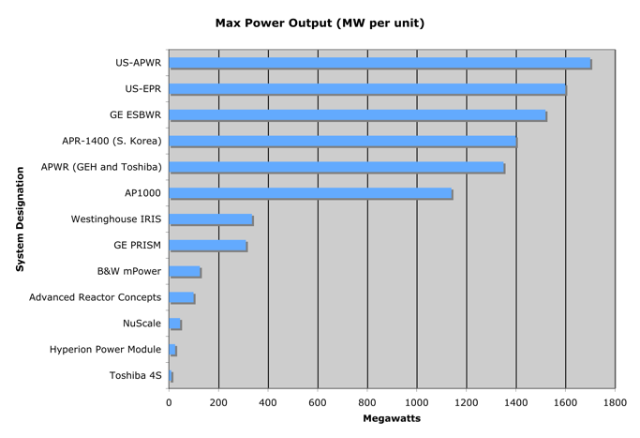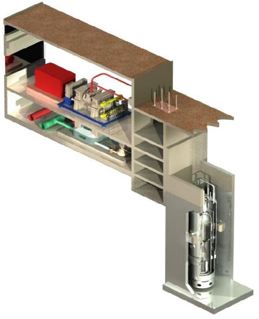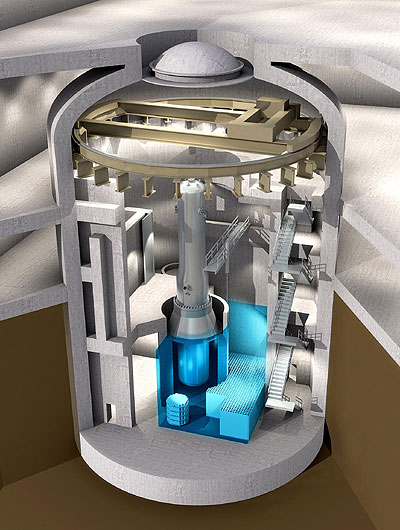D's Style & 32 Tweets; July 2010
First: David MacClement's 32 tweets which encapsulate me-and-my-wife's way of life as we continue living on NZ$7,490 (US$5,208 in 2007) per person per year.
Then: My style, by DM, in the thread: "J.M. Greer and DM on living on much less in future"
These 32 tweets were first published in Ubuntu Cloud at:
http://ubuntuone.com/p/9Qz/ - with file name:
DavidMacClement32TweetsChoicesActivsPlesntLife.txt (5.4kB
to be downloaded).
{My Twitter page: http://twitter.com/davd - then click "Favorites", has the same, but with the latest first; in 4575 characters (783 words of 5.84 charac.) in June-July 2010.}
I admire John Michael Greer, and the "5.84 characters per word" came from word-count of Greer's Archdruid Report "Problems and Predicaments" (Aug 2006) at: http://jm.ly/cn28cg
D.M.'s tweet summary of his-and-wife's life:
I'm starting a series of tweets about our choices and activities living a pleasant life on US$5,208 each. Ordinals: base32:
http://sn.im/xap4k 16:51 Jun 11 2010 -{all: NZST}-
Main attitude: do well, whatever you're doing, & help othrs when you're the obvious person. Have low expectations for convenience, comfort
6:42 Jun 12 2010
Our attitudes, abilities affected by background. Born 1936 (Grt. Depression), 1941 (War in Europe). Cars: only half households. V few rich
5:43 Jun 13 2010
Late 1940s,'50s, early 60s: all British Commonwealth & most W. Europe had socialist parties occas. in government. Community not individual
10:03 Jun 14 2010
B-&-I'v livd for a month to many years in England, Scotland, Wales, Canada, Ghana, New Zealand, Nigeria, Australia, northern India; w kids
7:10 Jun 15 2010
B-&-I'v built radios, kitset amplifier. B built livingroom furnitur, bunks as divider so master bedroom became two for son & daughtr, toys
9:20 Jun 16 2010
I brought up chn to be capabl: smal alowance, cooking from scratch, exploring - taking risks, grass-cuting pay, going to friends by bicycl
8:19 Jun 17 2010
Now we'r living on NZ$7,490 (US$5,208) ea. we've put savings into re-roofing (corrugatd iron), ceiling & floor insulation, windfarm shares
10:59 Jun 18 2010
We're healthy by walking 5.6km (3.5 mi) evry day, bread-based meals w. carrot-n-cabbage (me) or fruit-n-vegs (B), & stress-minimised lives
9:50 Jun 19 2010
Have no health insurance, only minimal: house (fire) and used-only-monthly car (3rd-party). Free water: rain on roof stored: 4000-gal tank
7:35 Jun 20 2010
House: 3-br 1-bath old(1966) 1200sq.ft/111sq.m, wood-framed on 4x4-in wood post, water barrier, concrete block, clay. 4ppl: 300 sq.ft/pers
10:06 Jun 21 2010
Food buy. Daily: organic milk, bread: local superette, bakery (5 min walk). Weekly: organic fruit-n-vegs for 4: courier but cycle-rideable
11:07 Jun 22 2010
B's 2 garden plots, ea 1mX2m (22 sq.ft), did well. Tomatos (bush & tall), scarlet runnr beans, capsicums, 6 carrots, silver-beet, beetroot
8:11 Jun 23 2010
Had old grapfruit, prun-plum trees whn arrivd 1980; B made marmalad-n-jam 15 yr. 2005 sh startd planting fruit trees. Ate 3 appls, feijoas
7:59 Jun 24 2010
I drink 1.5L watr mornings: use electr ketl, induction cookr & stainles teapot t mak 4 blak & 1 green teas daily. Hot watr in vacuum flask
9:39 Jun 25 2010
by intrnet frm Kawau Island. Helpd petrol-drivn post-hole diging then after moonris had bath in half 44gal plastic drum w hot water, dippr
18:21 Jun 26 2010
Othr electr: lights, computr (Mac Mini & 2002 laptop), hot watr, pump, washr, old frig. Our 2to4-pers houshold: 2,260 kWh/yr, ea: 2 kWh/dy
16:35 Jun 27 2010
My https://davd.tripod.com/#new describes involvement with .04%-my windfarm (befor recent dilution). My part of 230 MWh/day was 92 kWh/day
18:45 Jun 28 2010
Our 1-yr-old eficient stove burns wood frm our 1/4-acre; 2 logs heats 1 room. "Cold" days only need hot watr bottle undr wool shirt/jacket
12:58 Jun 29 2010
In Auckland, latitud 37 (Monterey CA; Sicily), New Zealand w. near-free public helth, livng on tax-pd US$5,208-6,921/pers/yr isnt dificult
16:49 Jun 30 2010
Little luxuries: after walks, beer: 250 ml or one small glass between us (alcohol: 8.5ml D, 3.7ml B). Sat & Sun: one coffee + croissant ea
8:17 Jul 1 2010
RusselNorman: Off to event marking 1 yr of Green National home insulation scheme w JohnKey. 50000 homes warmed up. Good for health and enviro. Wave green flag!
10:57 Jul 1 2010
Th @RusselNorman RT bcaus our low-incom houshold qualified fr govt asistnce w insulation. Also hav new corugatd-iron roof & eficient stove
19:33 Jul 2 2010
We volunteered/taught physics in Africa & in Canada & NZ; we continue helping community: making submisions & marching http://cli.gs/81My9p
9:11 Jul 3 2010
I walk barefoot most places, daylight. Wear shirts, Ts, from teaching in 1980s. Buy U-pants, hemp jeans 2-3 yrs. Accept gift NZ-wool shirt
9:21 Jul 4 2010
Enjoy: reading; libry bus Wed Greenhithe http://sn.im/GrnhthShops hamRadio; writng lectur-notes t http://groups.yahoo.com/group/LessIsMore
8:48 Jul 5 2010
I don't aprov of what most OECD peopl do most of th time; took wrong trak in 50s. Doing usualy requirs using-up material & energy. Minimiz
8:16 Jul 6 2010
See my weTookTheWrongTrack-inThe50s-n60s: http://ow.ly/26ACt Positiv Futurs Dc2000. &: IveHadA-GoodLife_Civilization: http://bit.ly/c0MCz6
8:31 Jul 7 2010
Psych Medicine http://www.fmhs.auckland.ac.nz/som/psychmed I wondr if most peopl in the OECD are psychologicaly ill, divorced from reality
17:16 Jul 8 2010
I use eficient 1990s NZmade top-load washr & lineDry. Not frig. Foreseeing the futur: http://j.mp/bjXNLP Predicaments: http://jm.ly/cn28cg
7:36 Jul 9 2010
Enjoyd free travl & entry t Transpt n Technol Museum 132yo steam-pwd beam engin. B said, sharing cofee-n-mufin "its good t b married" 1968
11:31 Jul 10 2010
B's projcts: 1: upgradng hous t last >25 yr eg shwr; 2: onlin transcrib photos f census & B-M-D recrds frm 19th cent; 3: garden. Me:routin
8:21 Jul 11 2010
Goal: a satisfying life enjoyabl at times, within self-imposd limitation frm 7to10 bilion peopl on earth: water sunlight soil biodiversity
7:23 Jul 12 2010
-{added; Predicaments: http://jm.ly/cn28cg is by John Michael Greer, August 31, 2006. "US$5,208" was mid-July 2007, all payments recorded}-
_~_~_~_~_~_~_~_~_~_~_~_~_~_~_~_~_~_~_~_~_~_~_~_~_~_~_~_~_~_~_~_~_~_~_
My style, by DM. {in the LessIsMore thread: "J.M. Greer and DM on living on much less in future"}
· JM Greer said (at
http://jm.ly/cn28cg ): "the American middle class [is trying to] maintain the
privileges and perks of its lavishly subsidized lifestyle ..".
· Most members of the LessIsMore list, including me, have chosen a different style: frugal and sharing rather than individualist and even selfish (or greedy). For me it _is_ a choice; I am rich compared with the average world citizen, and possibly richer in land-plus-shares than the average member of LessIsMore - I have no intention of selling the two multi-acre properties I have a share in (I consider myself caretaker/guardian, *Kaitiaki|*), and only selling this quarter-acre suburban section when we (or I) leave here. _|*: http://en.wikipedia.org/wiki/Kaitiaki
· Above are the 32 140-character tweets from me which describe my life and some of my philosophy in nominally 783 words, but this freezing morning I became aware that I have certain characteristic ways which differ from the ways of most people, and even from others in my family. Describing them, calling them "my style", will seem self-indulgent, but I recognise I am changing as I get older and this marks a way-point on my journey.
Take wood-fires.
· Late day-before-yesterday while B and I collected daughter from Sandspit, our p-SIL returned after being at work in Auckland during the week, and lit the fire to welcome us home in the (winter) evening. I keep only the fire-lighting paper and sticks/kindling in the house, expecting to go out to the front porch (or lift the tarpaulin covering the woodpile) to get the two logs which is all I normally put on the fire.
— p-SIL felt it was normal to have a small pile of such logs near the fire for convenience, so he brought in some; I prefer to have to go to some trouble to get the main fuel for the fire, as a reminder that each log has value, and to use one is to decrease our stock.
Take growing (and mature) trees.
· I am very reluctant to cut branches off (or fell) any tree, even the Privet|¹ weed-tree which has "self-seeded" all over this area because many birds eat the drupes/fruits. This extends to a great dislike for the Council's removal of a tall macrocarpa that was leaning on its neighbour - we could do nothing because our recent boundary survey showed the Council to be correct in saying the trees along Almond Grove are on their land, not along the boundary as we had thought for nearly thirty years.
— Those macrocarpas are too tall, it's true, as shown by the winter shadow they cast on our house and backyard with its garden and fruit trees. And the long shadows meant that B had grown to wish all the tall ones were removed, not even pruned back (which is not possible with a macrocarpa since they don't put out new shoots from the stem after the top or ends of branches are cut off).
Take clothing.
· I wear jeans and shirts until they are beyond holey, mending them with whatever colour of thread is handy to hold them together for another six to twelve months.
— Others in the family also go to some trouble repairing them so they can keep wearing clothes until they're too worn to consider sending to "Goodwill" or a second-hand clothing store. But generally those repairs aren't particularly visible.
Take adjusting to a latitude-37 (maritime) winter.
· We have a hard frost this Sunday morning (11 July) but B and I are warm again after taking (digital) photos of our backyard, since I lit the wood fire an hour before she got up. But it is only this livingroom which we heat, so we use little wood. All the 30 years we've lived here the bathroom has been unheated, until this last week: I moved the 1990s LPG-propane portable heater into the space freed-up when we removed the cast-iron bath), and several of us have used it; the shower-stall contains most of the warm air which used to warm the whole room (somewhat).
As I was bringing up our kids they had no heat in the bedroom(s) for a few years, then a radiant heater mounted high on the walls. Even so, I believe now that I should have paid more attention to whether they were warm enough in bed with just one or two hotwater bottles and thick quilts. Nowadays I am quite happy to wear 6 layers of clothing with my 48yo "Loden-coat" on top, even in this living-room, but the other three find it quite warm enough with two layers. Knowing it will be warm in the sun outside, mid-morning, makes it easy to put up with feeling cool now. I'm fairly sure our bodies use more food energy to keep warm during the winter, which I believe is part of sustainable living. Ref: http://en.wikipedia.org/wiki/Loden_cape
— Others outside my family consider that a warm bedroom is necessary, partly to avoid becoming susceptible to breathing-system infections.
Take travel.
· I walk (or could ride a bike) everywhere I might want to go, using buses only when I'm accompaning B or for household reasons. I will certainly never fly (other than gliders) again. I do this since I am aware several times a week that I "shouldn't be here" because there are 4 to 5 billion excess people on earth at our current OECD consumption rate, and I can justify my staying alive only if I reduce my consumption (fossil fuels particularly) to well below the current world average - to me at least one-third of such a reduction should be the ethical choice of all those in the richer half of the human race.
— Others, at an earlier stage in their life, are not yet able to say: "I've had a good life, I don't want more; my life is enough." {Apr 1998; - still available (originally as a Google-cached copy) at: http://davd.i8.com/PF/921-IveHadA-GoodLife_Civilization.html#up }
Take eating locally.
· I'm not where I want to be in this yet, partly because supply sources and routes keep changing. But our recent fruit-and-vege delivery included Samoan organic bananas, shorter and better flavour than the industrially produced Cavendish variety: http://en.wikipedia.org/wiki/Banana#Cavendish And I try to get our Fair Trade coffee from East Timor|², on the basis that (a) they have very little other than coffee to export, and (b) it would a lengthy but relatively easy trip by sailing ship, or more likely, sail-assisted bio-diesel-engined cargo ship|³.
— Most others hardly read the details on the label, let alone know where their food comes from. Some, in a few cases through no fault of their own, wouldn't know how to cook or otherwise prepare food directly from a horticultural source or organic farm (IMO CAFO|ª-meat is completely out of consideration).
Take socialising.
· This is an essential for most people, but as an incipient-autistic person I find plenty to interest me that doesn't involve being with people for more than around an hour at most. I don't seem to have ever needed others affirming "who I am" or loving me, beyond B whom I met (through the Toronto Scientific Introduction Centre) when I was 30yo.
— In contrast, _everyone_ I have ever met wants to have good friends. I am including this in this "My style, by DM" post because far more money and time than most people realise, is put into social activities ("going out" and having visitors, including having an impressive home and keeping it and gardens tidy and attractive). I don't say my way is better, just that it's part of "My style".
Take daily life.
· I am most comfortable in a very routine life where I have built the routine. I put the things I use in specific places, use a rota of three sets of clothes so I don't have to think about what to put on, eat the same nine food items (raw veges, peanuts and bread) day after day for eighteen years, and am happy leaving within a minute of 06:45 AM to walk up the road in the dark to get our daily bread. Part of my self-diagnosis of autism, though I call it an aspect of "my style".
— Others don't mind much if things are out-of-place, and want variation in what they do and eat, I guess to keep life interesting.
David.
_|¹: Japanese Privet: http://en.wikipedia.org/wiki/Ligustrum_ovalifolium pic: http://ow.ly/29wbZ ; original; http://upload.wikimedia.org/wikipedia/commons/thumb/b/ba/Ligustrum_ovalifolium.jpg/800px-Ligustrum_ovalifolium.jpg
_|²: http://en.wikipedia.org/wiki/East_Timor#Economy
_|³: For example, the sail-assisted Rainbow Warrior III: http://www.radionz.co.nz/news/stories/2010/07/10/12480faf8338
- pic on: http://snurl.com/rainbowarrior3 ; original: http://www.greenpeace.org/international/en/news/features/rainbow-warrior-three020709/
AP article: http://www.google.com/hostednews/afp/article/ALeqM5gn3MQ0u44-0DHH7ejIiqX70skAgA?index=0
NYTimes: http://www.nytimes.com/2010/07/10/opinion/10iht-ednaidoo.html?_r=5
_|ª: Concentrated Animal Feeding Operation http://en.wikipedia.org/wiki/CAFO
- or more generally: http://en.wikipedia.org/wiki/Factory_farming
Posted by davd
at 12:49 NZD
Updated: Friday, 31 December 2010 15:18 NZT




